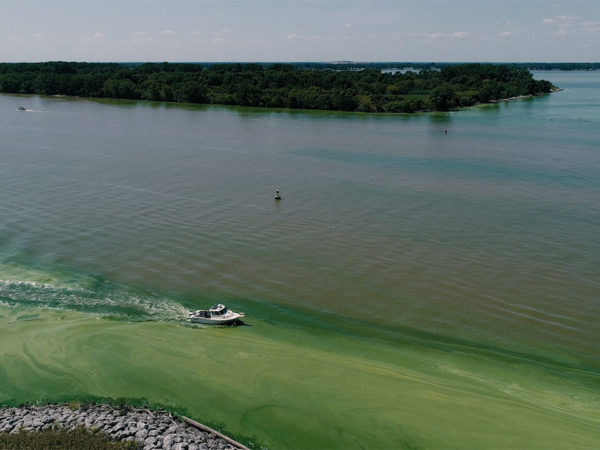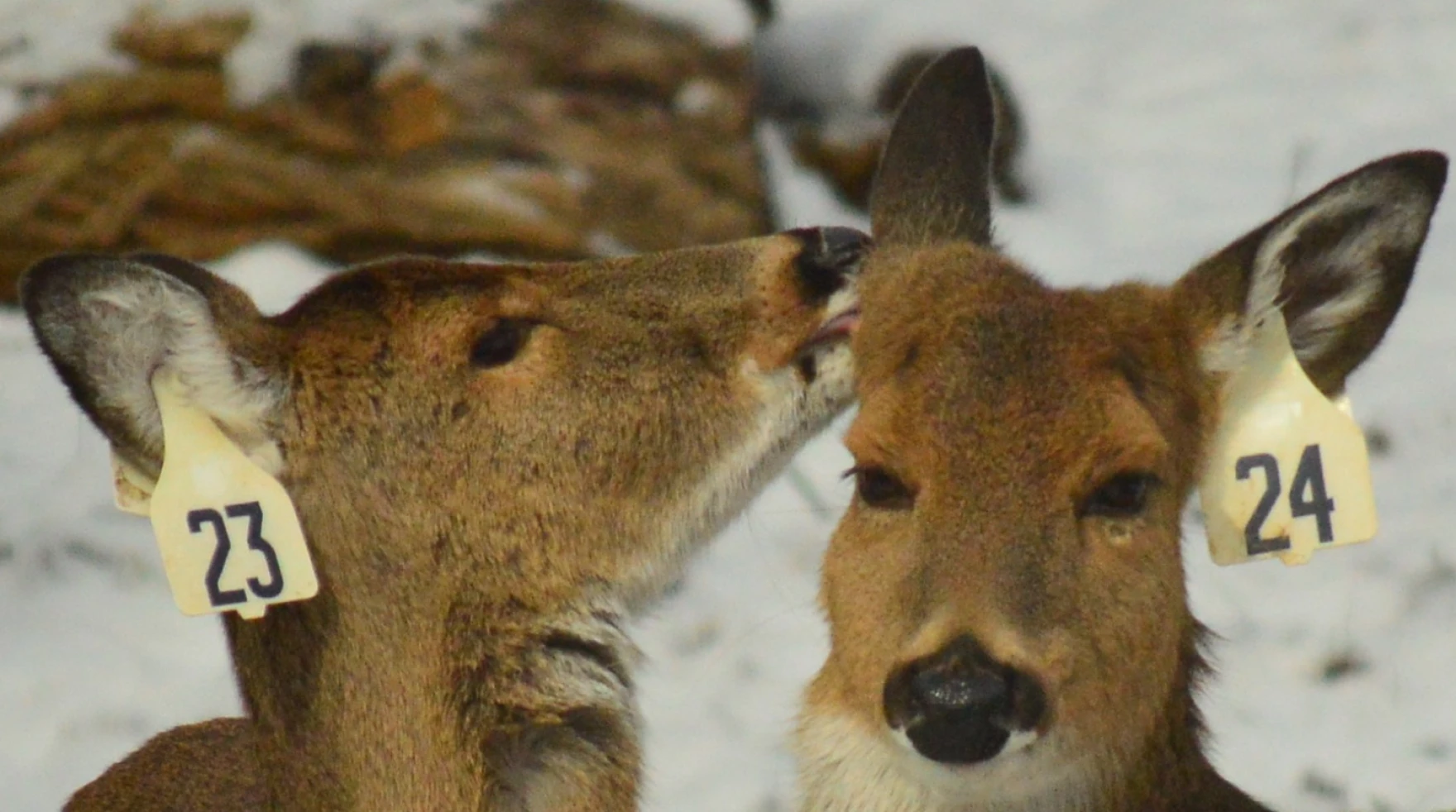
By Ellie Katz, Interlochen Public Radio
Points North is a biweekly podcast about the land, water and inhabitants of the Great Lakes.
This episode was shared here with permission from Interlochen Public Radio.
White-tailed deer are one of a few species that have managed to thrive as we urbanize and suburbanize the Midwest. Humans have gotten rid of their natural predators and created more environments deer love. It’s made it easier for them to munch safely in cornfields, backyard gardens and city parks.
But overabundant deer populations can cause problems. They make it difficult for the forest to regenerate, and they eat up native plants, clearing the way for invasive plant species. Too many deer increase the risk of car accidents and the spread of disease. They damage crops and gardens. So communities often turn to culling the deer by hiring sharpshooters or allowing hunting within city limits.
That’s what was supposed to happen in Clifton in 2014 – a neighborhood in Cincinnati, Ohio. But a group of neighbors didn’t want to see their local deer killed. So they turned to another solution: deer sterilization.
Every winter, a dedicated team of volunteers ventures into Clifton’s wooded city parks. They tranquilize a doe, transport her to an operating room, make a small incision, and then carefully remove her ovaries.
Nine years in, they’ve ovariectomized almost 100 deer. But the ethics of sterilizing a wild animal are complicated.
CREDITS:
Host / Producer: Ellie Katz
Editor: Morgan Springer
Additional Editing: Peter Payette, Ed Ronco
Music: La Naranja Borriana, Selena Leica, Inspector F, Coulis Coulis, Come As You Were, Come As You Are by Blue Dot Sessions

A volunteer rests his hand on an unconscious doe as she’s transported back to the woods after surgery. (credit: Ellie Katz / Points North)
TRANSCRIPT:
ELLIE KATZ, BYLINE: It’s just after 11 p.m. in Clifton, a neighborhood in Cincinnati, Ohio.
Randy Junge is in a deer blind in the woods waiting. He’s been in the cold for hours, hoping a deer will show up. Then, at 11:11, a doe wanders over and Randy takes his shot.
(hiking sounds)
KATZ: He texts a group of us and we start hiking up to him.
(hiking sounds)
KATZ: We’re walking through the woods up a big hill and through a bunch of dry honeysuckle. There’s a big flashlight and that’s where the deer is.
KATZ: Randy is standing next to the doe holding a flashlight. She’s lying on her side. Someone slides a blindfold over her eyes.
(sounds of tarp moving)
KATZ: The guys shimmy her onto a makeshift stretcher. And then…
MALE VOICE: Perfect. Alright. Ready?
KATZ: They carry her back down the hill.
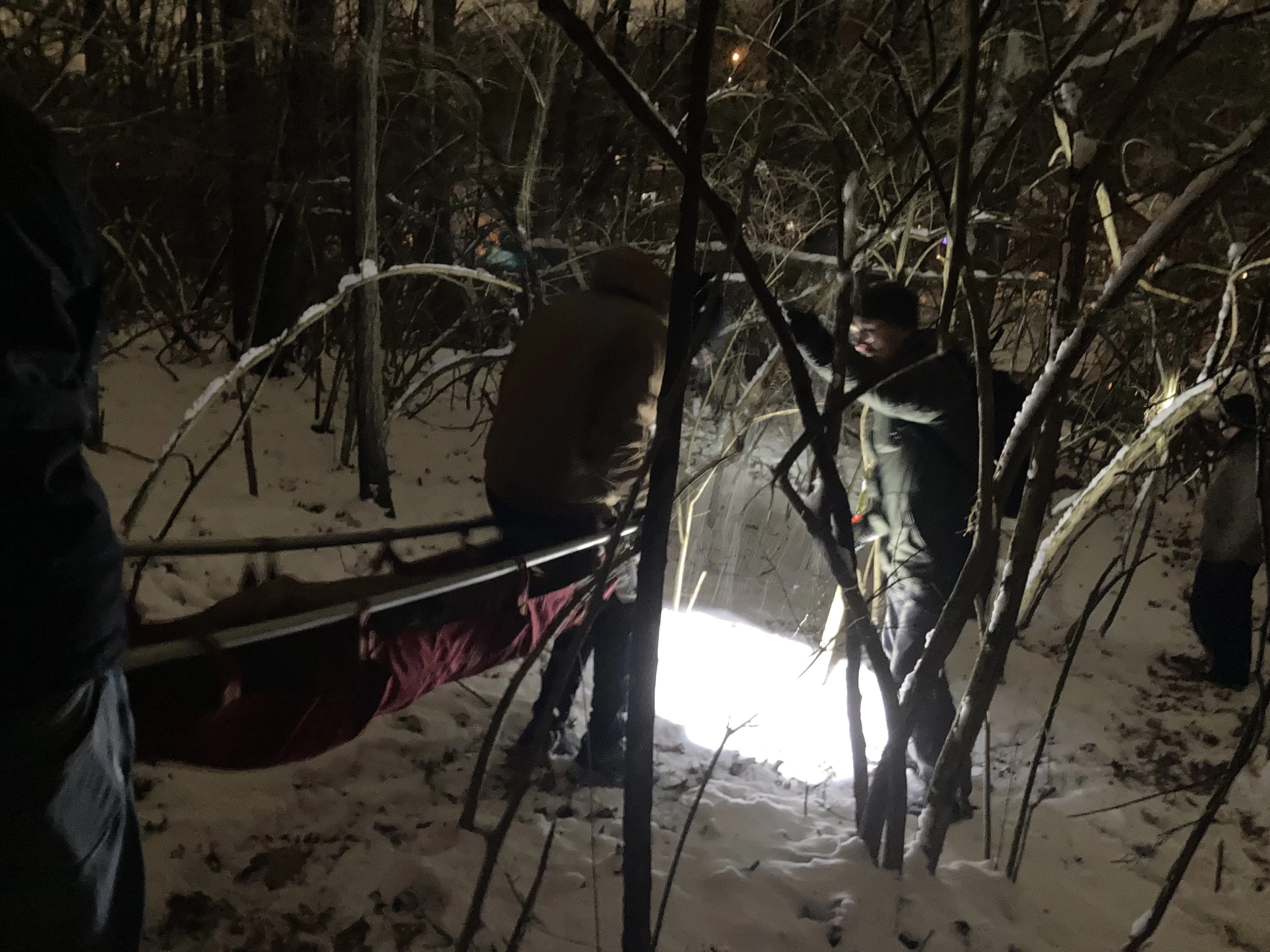
After a doe has been shot with the tranquilizer dart, volunteers must find where she fell and carry her out of the woods on a stretcher. (credit: Ellie Katz / Points North)
(sounds of hiking, branches snapping)
MALE VOICE: You good?
KATZ: And load her into the back of a pick up truck.
(car sounds)
MALE VOICE: I’m just going to rotate.
MALE VOICE: You guys rotate.
MALE VOICE: Which way?
KATZ: And then we drive off.
(car driving sounds fade out)
KATZ: But we’re not going to a processor or a taxidermist. Because Randy shot the deer with a tranquilizer dart. And this doe – she’s still very much alive. We’re heading to an operating room. When we get there, they’ll flip the deer over, make a small incision and remove her ovaries.
This is Points North. A podcast about the land, water and inhabitants of the Great Lakes. I’m Ellie Katz, in for Dan Wanschura. Across a lot of our region, there are just too many deer. And people have different ideas about how to solve that problem. Today, we look at one unique fix.
(sponsor messages)
LAURIE BRIGGS: Yeah, I really do well at cocktail parties, you know? Like, I’m the deer ovary lady.
KATZ: This is Laurie Briggs. One day, in 2014, Laurie got a call from her friend Chris Lottman.
BRIGGS: And Chris says, “Did you hear about the Clifton town meeting tonight?”
KATZ: Clifton is the Cincinnati neighborhood where Laurie and Chris live. It’s got these big, beautiful rolling hills and wooded city parks. But the deer there were getting out of control. So the parks board proposed a pretty standard solution: a bow hunt.
Chris told Laurie, “We should go to this meeting.”
BRIGGS: And I’m like “Yeah, I’m in.” So there’s Chris and I. We know absolutely nothing, have never thought about deer management in any way.
KATZ: But they showed up to the meeting anyway. What was happening in Clifton is happening all over the midwest. There are way too many white-tailed deer. Especially in urban, suburban areas where we’ve killed off their natural predators and planted a lot of nice food for them to eat.
All these deer – they prevent the forest from regrowing, they eat up native wildflowers and make room for invasive plants. They cause car accidents, destroy people’s yards and risk the spread of disease.
So towns and cities across the region often decide to cull the deer. But Laurie and Chris were not on board with that.
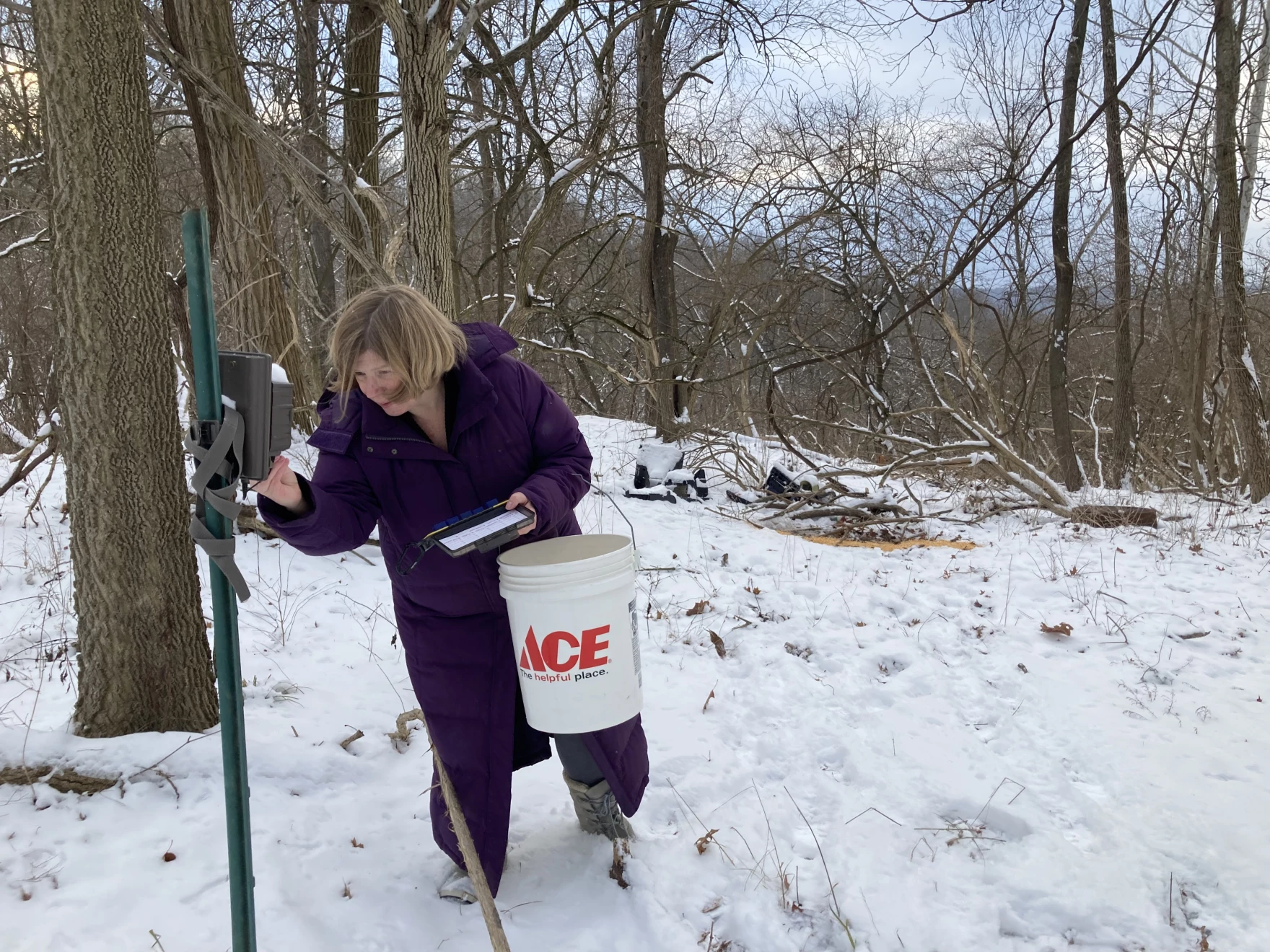
Laurie Briggs, one of the founders of CliftonDeer.org, changes the batteries on a game camera. The camera is pointed at an area the team has been baiting for weeks in order to attract deer to the same spot, specifically the “targets,” or deer they’re hoping to sterilize this season. (credit: Ellie Katz / Points North)
BRIGGS: They’re urban deer. So they’re used to people. They’re in our yards all the time, and they just feel like our neighbors. And the idea of them being hunted … It felt like if I didn’t try to come up with another solution, I was letting my neighbors down.
KATZ: So they asked for a brief pause on the hunting to research deer control options that didn’t involve killing. But the answer was…
BRIGGS: …was very polite, but very firmly, “No.” … I felt a little bit scared, like, this is gonna happen. And I am going to hate seeing my neighborhood deer killed. And there’s nothing I can do about it.
KATZ: But her friend Chris had other ideas. So the two of them started frantically researching. They’re making phone calls, googling, emailing; they’re reading about culling, about deer immunocontraceptives, birth control shots, deer vasectomies, deer field surgery.
And then, then they found Tony.
KATZ: How do people react when you explain what you do if you’re at a dinner party or something?
TONY DENICOLA: There’s always intrigue, and then it kind of depends on the audience, right?
KATZ: That’s Tony DeNicola. He’s a wildlife biologist and the CEO of White Buffalo Incorporated.
DENICOLA: Vickie, my wife, always reminds me that she tells people that I was shooting monkeys. And some people look at you like, “What the hell does this guy do?”
KATZ: Tony and his colleagues at White Buffalo travel around the world controlling species that have gotten a little out of control. Sometimes it’s an invasive monkey colony. But mostly it’s animals like pigs, goats, elk and deer.
With deer, they use two main methods to reduce the population: Lethal control, like sharpshooting, or fertility control. Tony’s been doing this since the early 90s. For a while, he’d been testing out what are basically birth control vaccines for deer, but they weren’t really practical because they required multiple injections.
Laurie and Chris got in touch with him around 2014.
DENICOLA: By then, we had already done several field projects, where we had transitioned from what was supposed to be cutting edge, vaccine-based fertility control research into what was originally discussed as being absolutely insane, which was performing surgeries on wild animals. So we started researching the best methods for doing ovariectomies. That was the start of this notion. And we were like, “This isn’t so bad, right?” We can do these procedures in 10 or 15 minutes. The survival rates were pretty amazing.
KATZ: The whole ovariectomy procedure is less complicated than spaying a cat or dog. You’re just taking out the ovaries, not the entire reproductive tract. And in dense, urban areas where shooting isn’t allowed or isn’t ideal, this surgical sterilization can be a good option.
Laurie and her friend were interested. And they decided to convince the neighborhood.
(sound of metal gurney rolling)
KATZ: It’s 11:50 p.m. The doe is on a gurney at a spay and neuter clinic for cats and dogs.
(sound of electric razor)
KATZ: Vet tech Sarah Long pulls out an electric razor and starts prepping for surgery.
SARAH LONG: Shave a spot for the catheter, shave where they were hit by the dart, shave their belly for surgery.
KATZ: Every timestamp of every movement is documented for their records. Vital signs are, too.
LONG: 99.3 for her temperature.
SHERRY DRESCHER: Okay, I need gloves. Size eight. 99.3?
At 12:12 a.m.…
RANDY JUNGE: Incision.
DRESCHER: Okay, can one of you guys give me a time on that, please?
MALE VOICE: Oh, oh, twelve.
DRESCHER: Oh, oh, twelve.
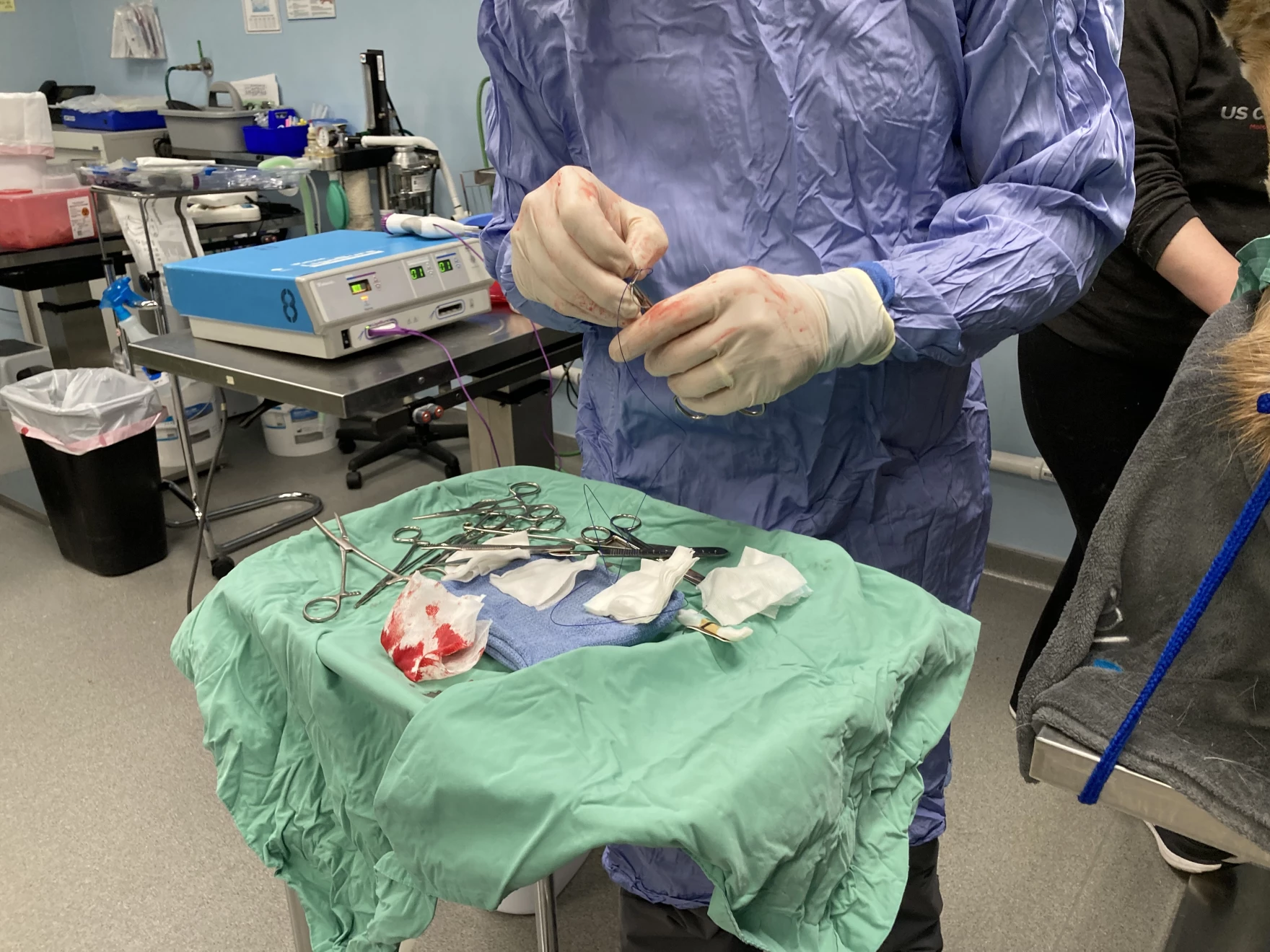
Randy Junge, veterinarian and vice president of animal health at the Columbus Zoo and The Wilds, prepares to suture the incision after both ovaries have been removed. (credit: Ellie Katz / Points North)
KATZ: Randy Junge, a vet from the Columbus Zoo (and also the same person who darted the deer), makes a small cut into her shaved belly.
RANDY JUNGE: It’s sort of a ram’s horn uterus. I just reach in, get under it and lift up, then follow one horn out. … And there’s the ovary.
KATZ: Within five minutes, Randy takes out both ovaries, which look like shriveled grapes. The vet tech uses a machine to seal the ovarian arteries.
(sealing and beeping sounds)
JUNGE: Alright.
At 12:30, Randy sews up her belly.
JUNGE: Last stitch.
DRESCHER: Last stitch. Next step’s gonna be close with staples.
(sound of staples)
KATZ: And staples it closed.
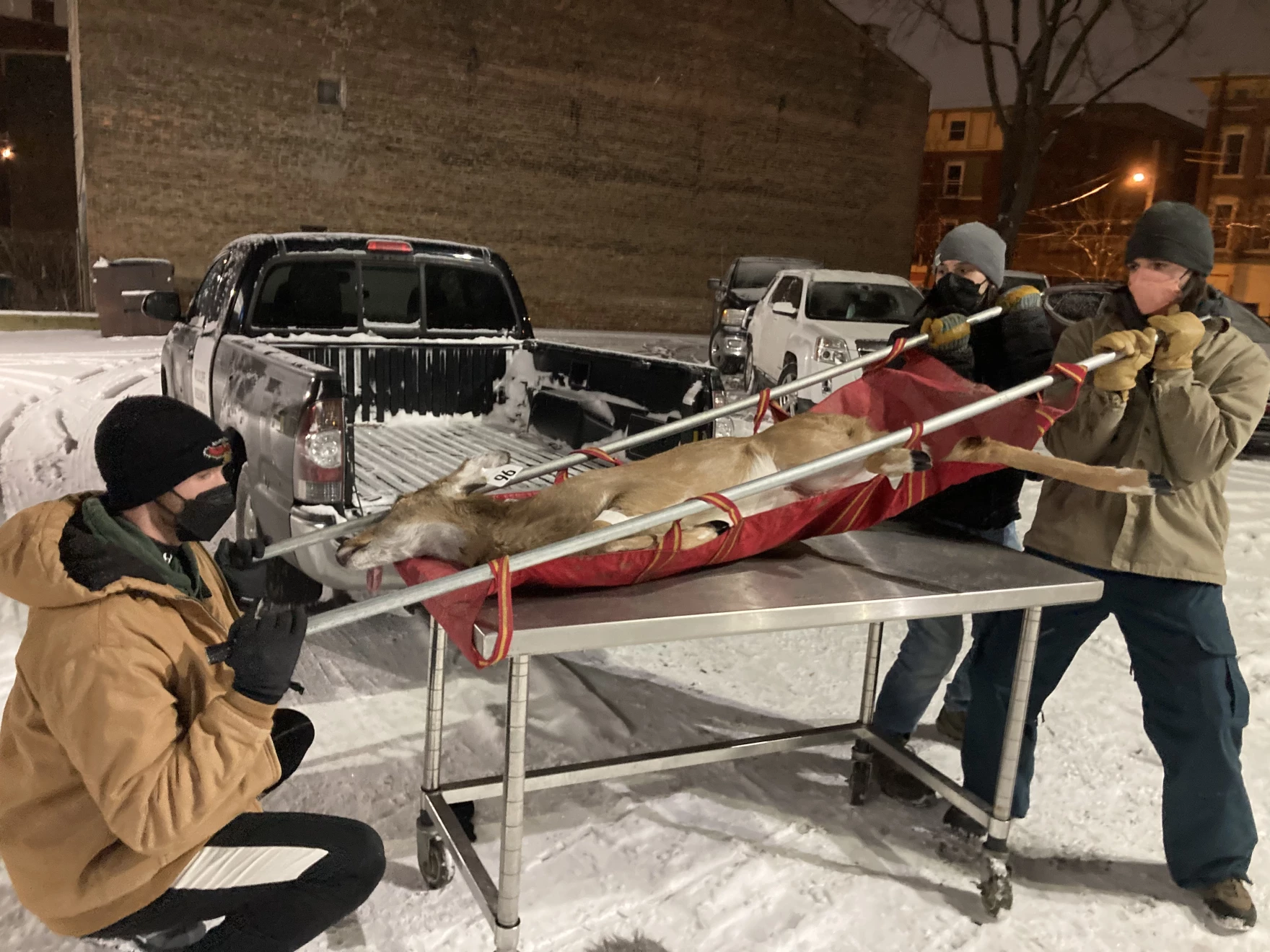
Volunteers gently lift deer #96 off of a gurney after surgery. The deer will be brought to a field near where she was captured and given a reversal drug to wake up. The incision will heal completely in about three weeks and the staples used to close it will fall out. (credit: Ellie Katz / Points North)
KATZ: Back in the fall of 2014, Laurie and her friend Chris brought all their research to another town meeting determined to stop the bow hunt. Jeff McElravy was not thrilled about this.
KATZ: You know, we see roadkill all the time, like with skunks and possums and things like that. What do you think about deer is different for people?
JEFF MCELRAVY: Bambi.
KATZ: Jeff has lived in Clifton since the 60s. He started hunting rabbits and squirrels as a kid.
MCELRAVY: I thought that the idea of bow hunting to thin the herd was a great idea.
KATZ: When the fall town meeting rolled around, hunters were ready to go.
MCELRAVY: So a lot of people have already gone through and had already set up their tree stands … and the park board was talking about stopping the hunt. I thought that was terribly unfair. If you’re going to do that, do it next year. … But there were sufficient people in the neighborhood that did not want to have the possibility of a dead deer in their yard and other people that just didn’t like the idea of hunting period.
KATZ: The park board decided to call off the bow hunt in Clifton. And one alternative, deer ovariectomies, seemed like the most viable option.
KATZ: Did any of your other bow hunter friends – did they think it was silly at all?
MCELRAVY: Well, to some degree, yeah. I mean, as far as cost, all the effort that goes through doing it in that manner … you got a lot of manpower that’s involved with it. But if you’re not going to hunt, something has to be done.
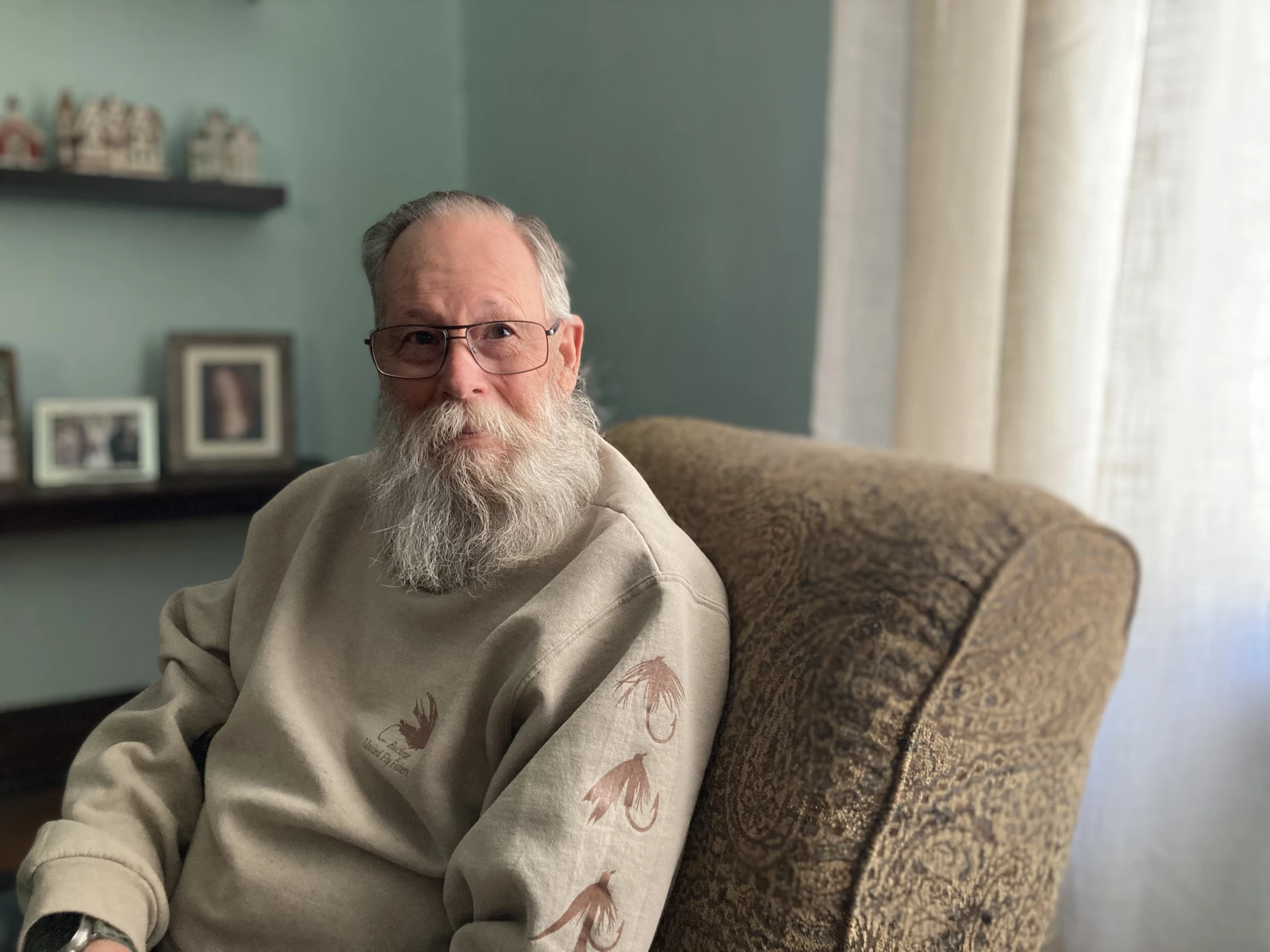
Jeff McElravy in his home in Clifton. McElravy was a bow hunter for many years. He says he was never opposed to the sterilization project but became frustrated when the bow hunting program was canceled shortly before the season began. (credit: Ellie Katz / Points North)
KATZ: The estimated cost for that first year was $40,000, about $1,000 a deer. Laurie and the team got a $20,000 grant from the U.S. Humane Society, and then the rest was up to them. They needed to figure out all the details: The money, the manpower, the permits from the DNR. Laurie was writing grants left and right.
BRIGGS: It really was a second job. It kind of took over my life… All of us on the leadership team put in, you know, $1,000 or $2,000 of our own money to get it started… And then the rest – we went door to door that summer; we knocked on every door in the community.
KATZ: They raised the money. And sterilized 41 does that first winter. The project’s been going for nine years now. Laurie and a dedicated team raise the money each year and dozens of people volunteer.
They sterilized deer number 96 while I was there. And Clifton’s deer population has gone down by about 40 percent, which they consider a success.
Plus, the whole thing costs a lot less now, partially because there’s only a handful of does to target each year. It’s not a solution that works everywhere though. You’ve got to have roads to access the woods and people willing to pay. But places like Ann Arbor, Michigan, Cleveland, Ohio and suburban Chicago have run similar programs.
Still, why go to all that trouble? It’s cheaper and easier to hunt or hire sharpshooters. You can avoid all the freezing cold nights, all the fundraising, all the grunt work. And, is this really better for the deer?
BRIGGS: I mean, we’ll never know, I guess we’ll never know. I’m just trying to – I feel like this is the most compassionate thing we could do. And I’m in favor of adding compassion to the world when I can. But that doesn’t mean that we’ve got it exactly right.
KATZ: Laurie told me about their very first year darting deer. There were so many does to sterilize, and they were operating out of this makeshift surgical center.
BRIGGS: There’s this deer on the table, and I think it was Vicki DeNicola, who just, like, had her hand resting on the fur, and it just moved me so much. And it felt, not to be weird, but almost the weight of it felt sacred in a way… Increasingly, as I experience this, and I think I experienced it for the first time then, you can’t do this without feeling a lot of humility. Because it’s weighty… This is a wild animal who I care enough about them to go to all this trouble, but I’m also altering their future, and doing so because I think it’s best but without consent, and possibly endangering them if something goes wrong. I don’t know if they’d thank me for that because they’re spared bow hunting or if they’d say, “Why didn’t you just leave us alone?”
(ambient outdoor sound fades in)
KATZ: It’s almost 1 a.m. We’re in the middle of a soccer field near where the deer was darted. She’s lying on a tarp, waiting for the reversal drug to kick in.
RANDY JUNGE: She’s swallowing and blinking now.
KATZ: Randy, the vet, is cradling her head, rubbing her fur. Then, all of a sudden, she’s on her feet.
(sounds of tarp shuffling)
RANDY: Hi! Go that way.
KATZ: At 1:02, she gets her balance on the tarp and slowly walks off towards the woods, less than two hours after she was tranquilized. In a few days, the fur on her belly will start growing back. In a few weeks, the incision will heal, and the staples will fall out. She’ll live pretty much the same life as before, she just won’t be able to reproduce.
(ambient outdoor sound fades out)
KATZ: Jeff McElravy, the hunter, he has this reverence for deer.
MCELRAVY: Oh, they’re gorgeous – they’re gorgeous… You know, you’d watch the doe move around and feed, hop around, and… I like seeing them move through the woods…
KATZ: Do you think we owe wildlife anything? Do we owe deer anything?
JEFF MCELRAVY: I think we owe them the opportunity to have their space as much as we can, and to live their life cycles as best we can. When they start overpopulating, which they can do, then we have to do things to rein them in. How you get there, I really don’t care. I have a natural bent to the hunting, but the sterilization, that’s fine. But they’re put here for a reason. They deserve to have their space too, along with the rabbits and the squirrels and all the rest.
KATZ: Like Laurie said, I think most people are in favor of adding a little compassion to the world when they can. We’re all just trying to figure out how.
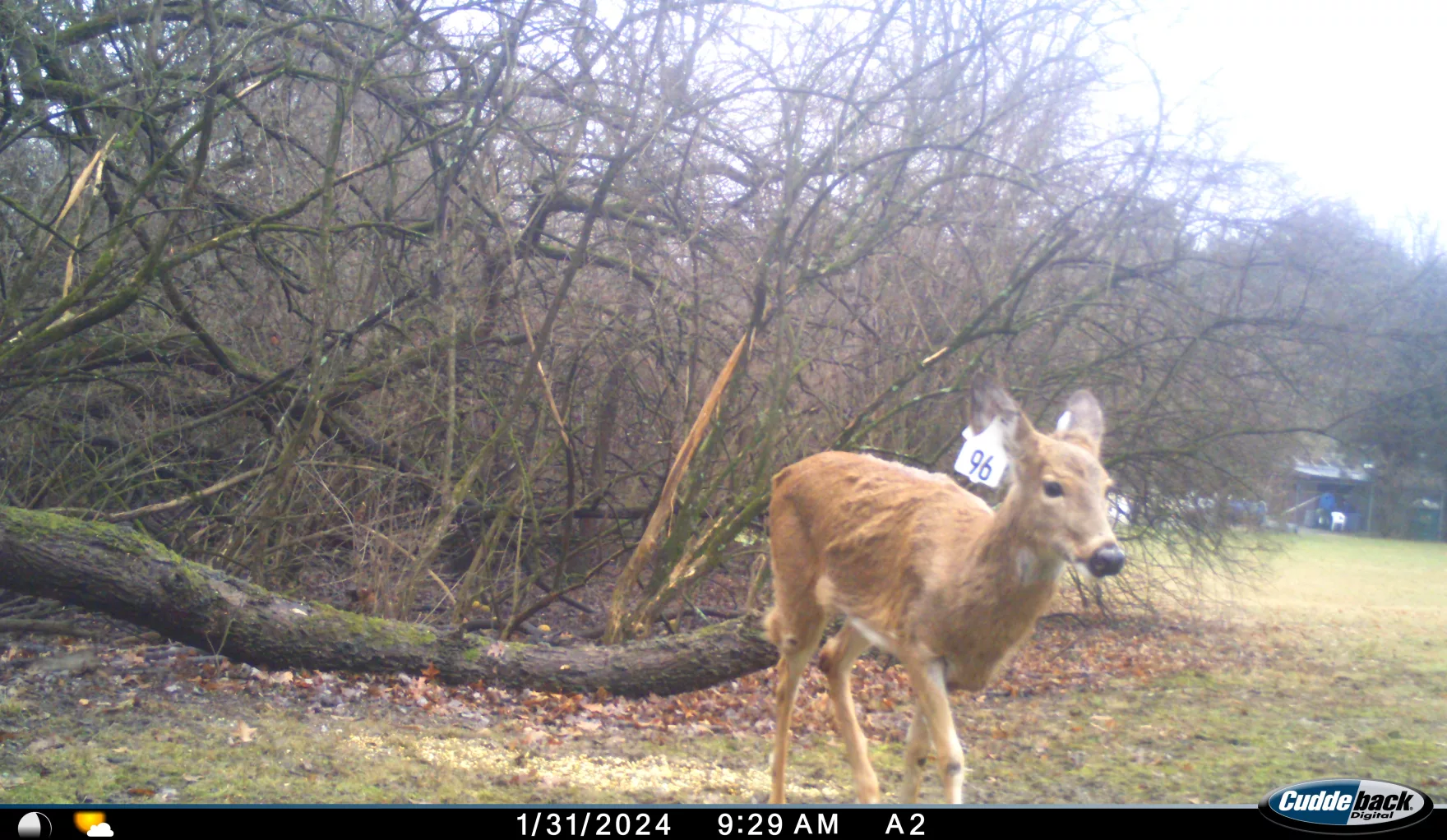
Deer #96 appeared on a game camera about a week and a half after being sterilized. (credit: CliftonDeer.org)
Catch more news at Great Lakes Now:
Featured image: Two does that have been sterilized and tagged as part of a deer fertility control project in Clifton – a neighborhood of Cincinnati, Ohio. (credit: Mark Easterling / CliftonDeer.org)




